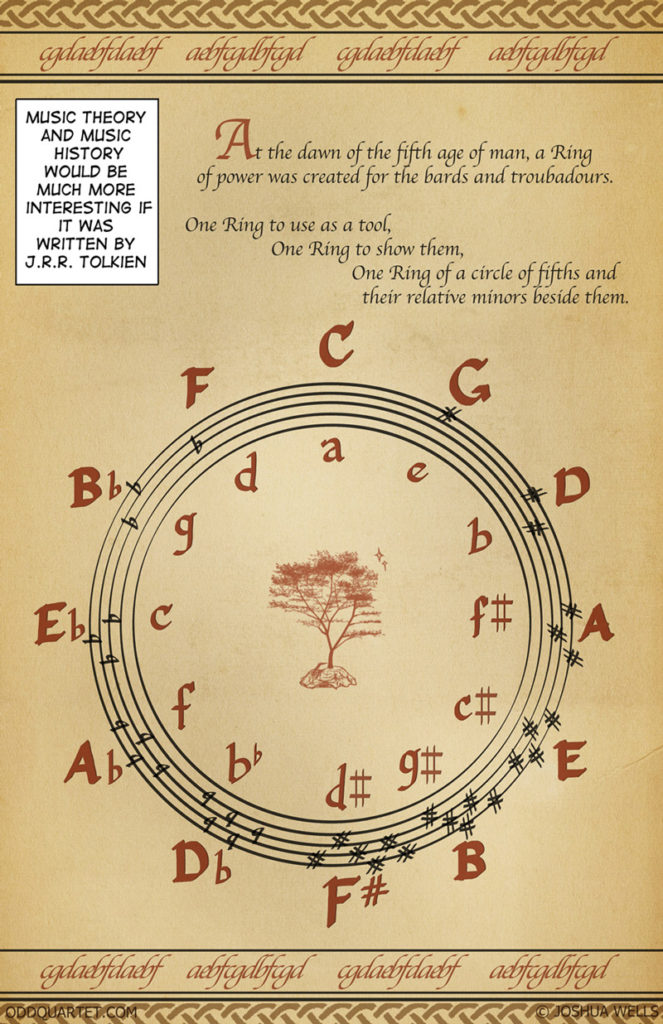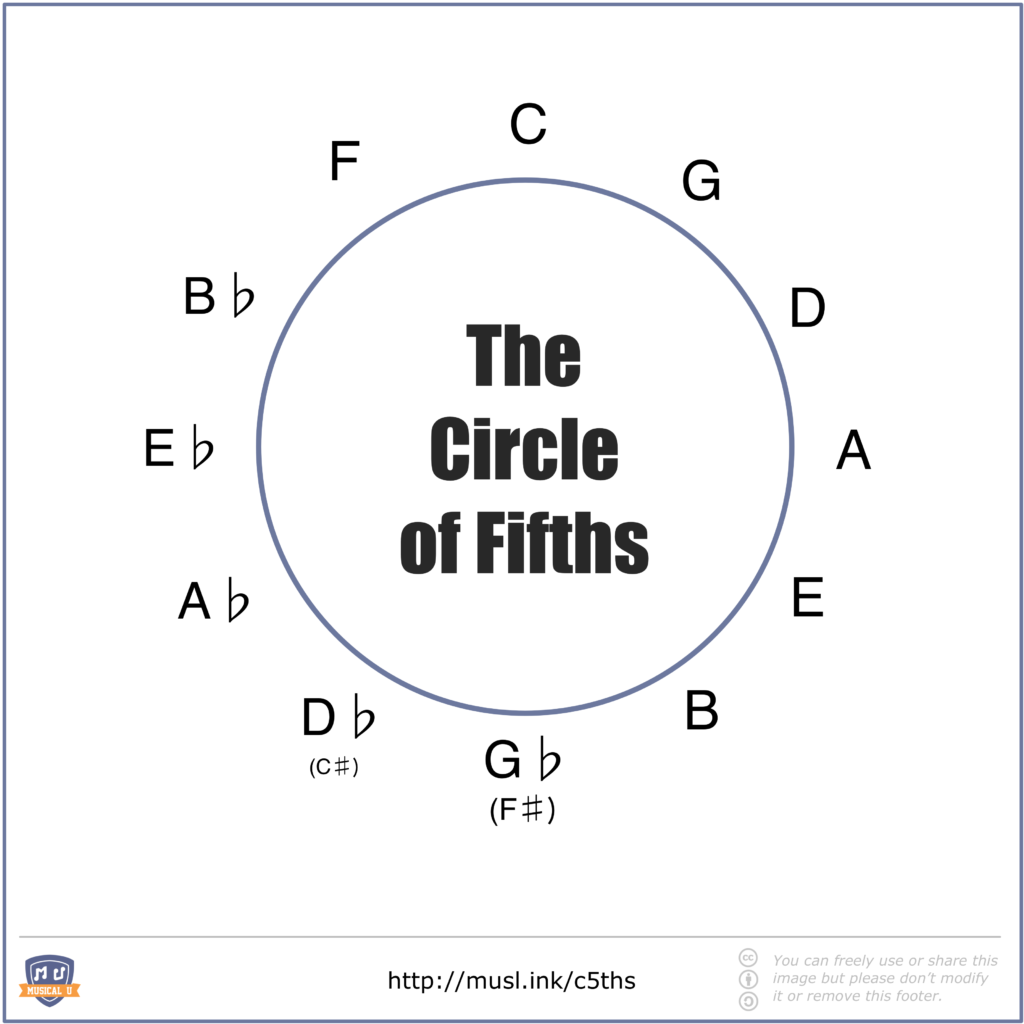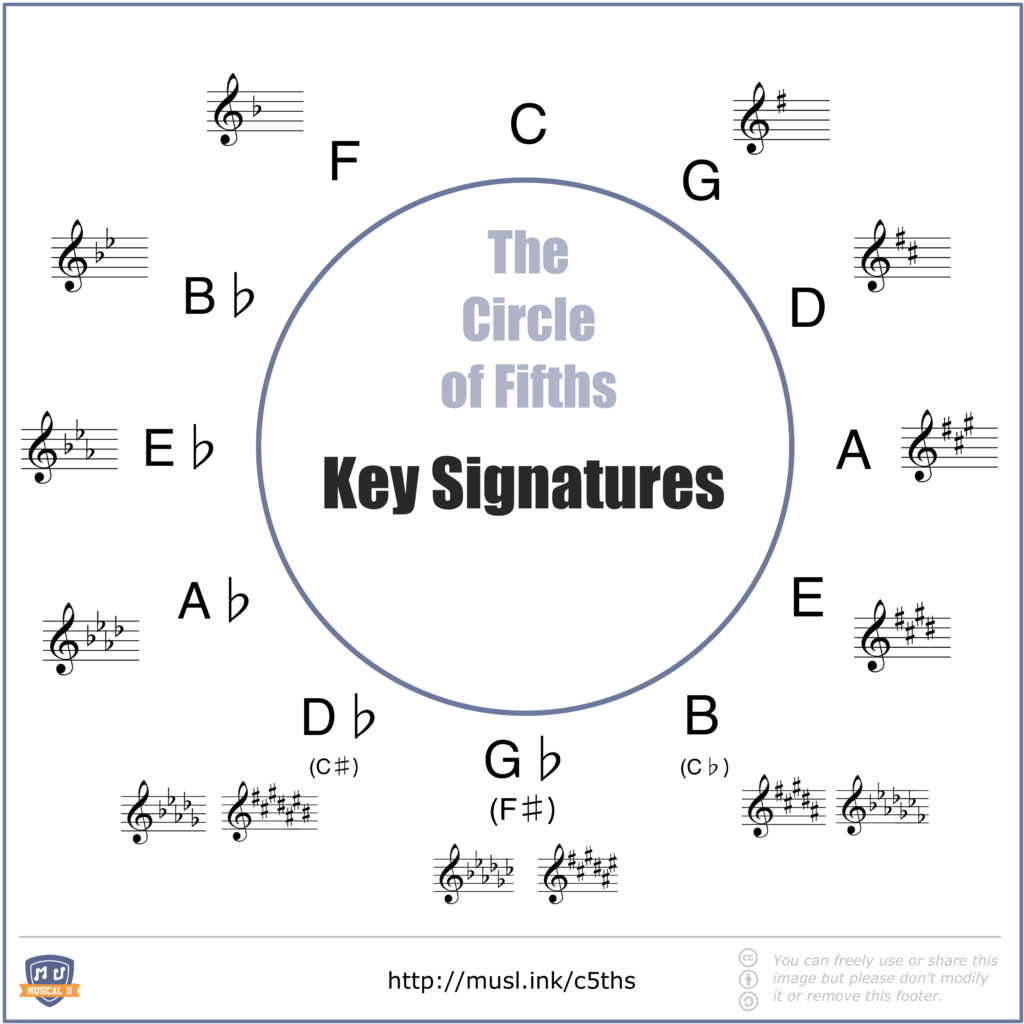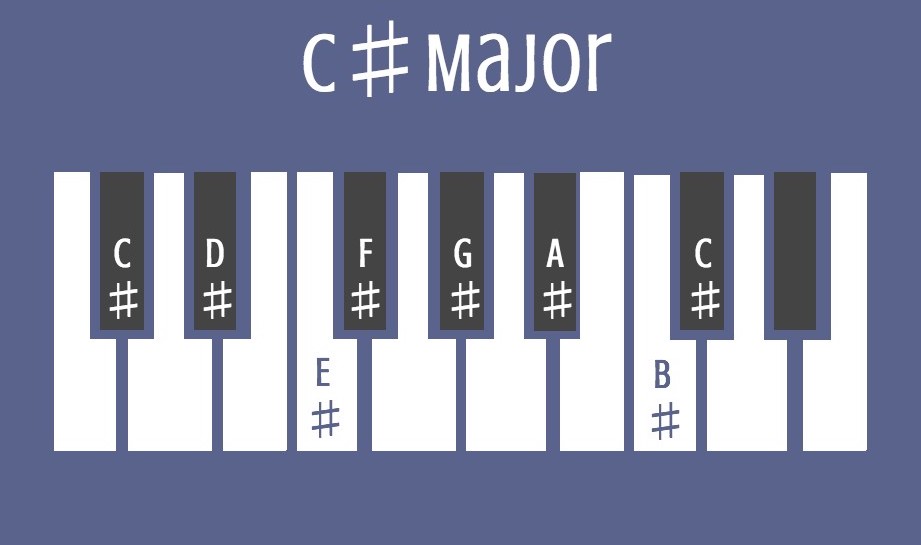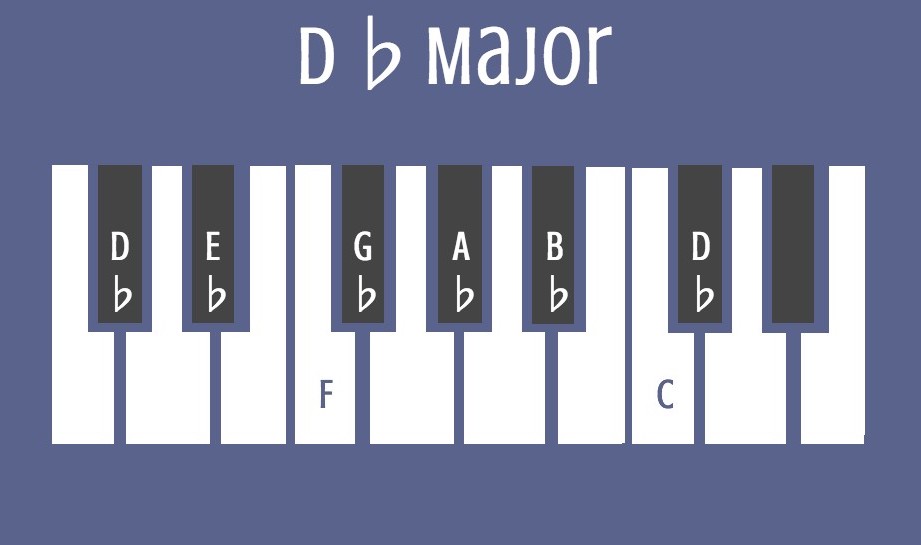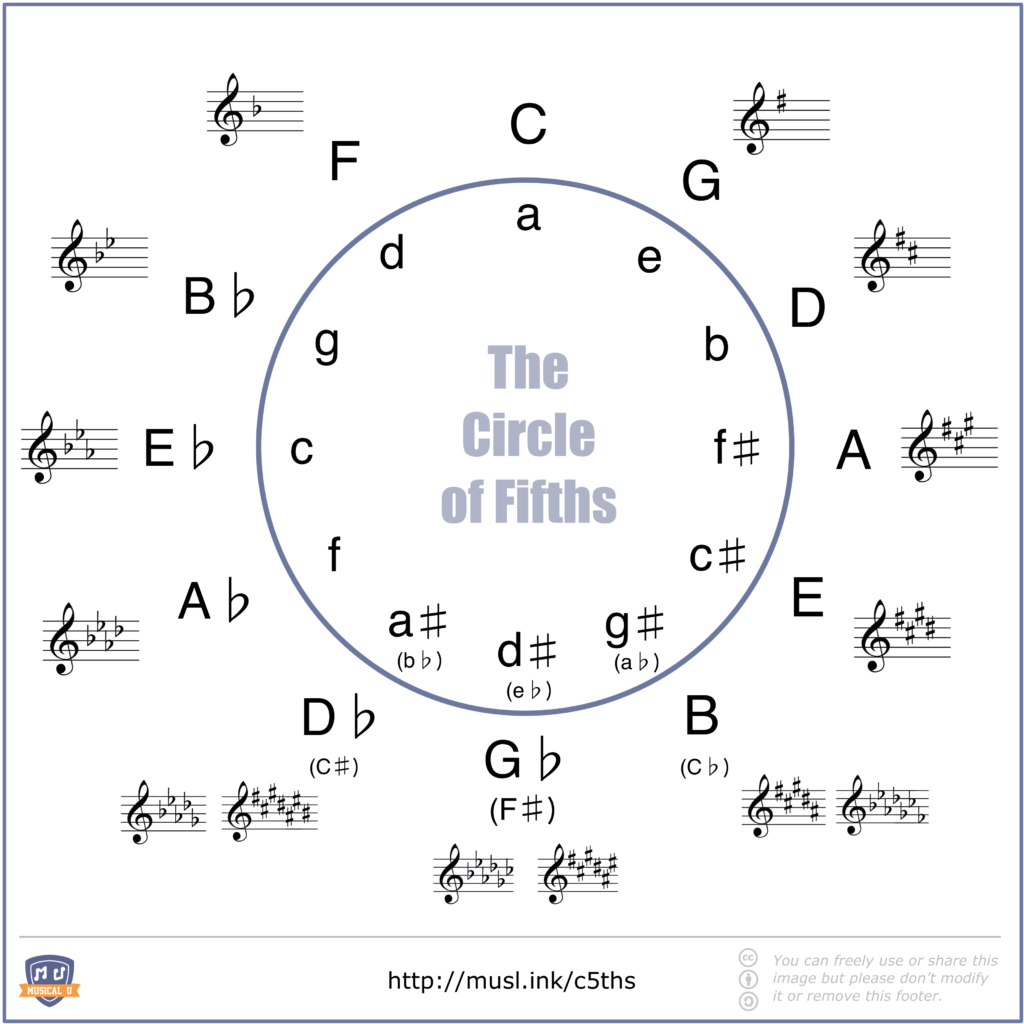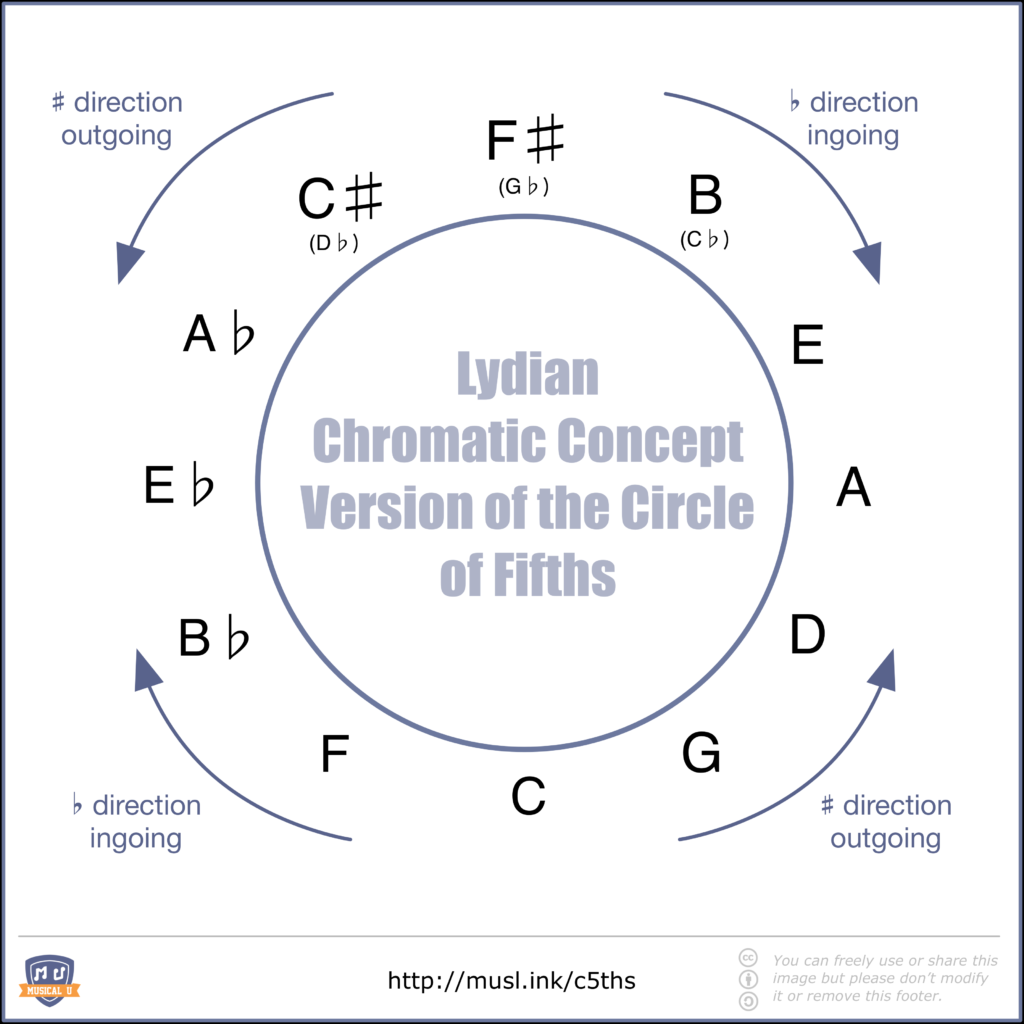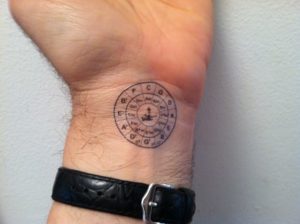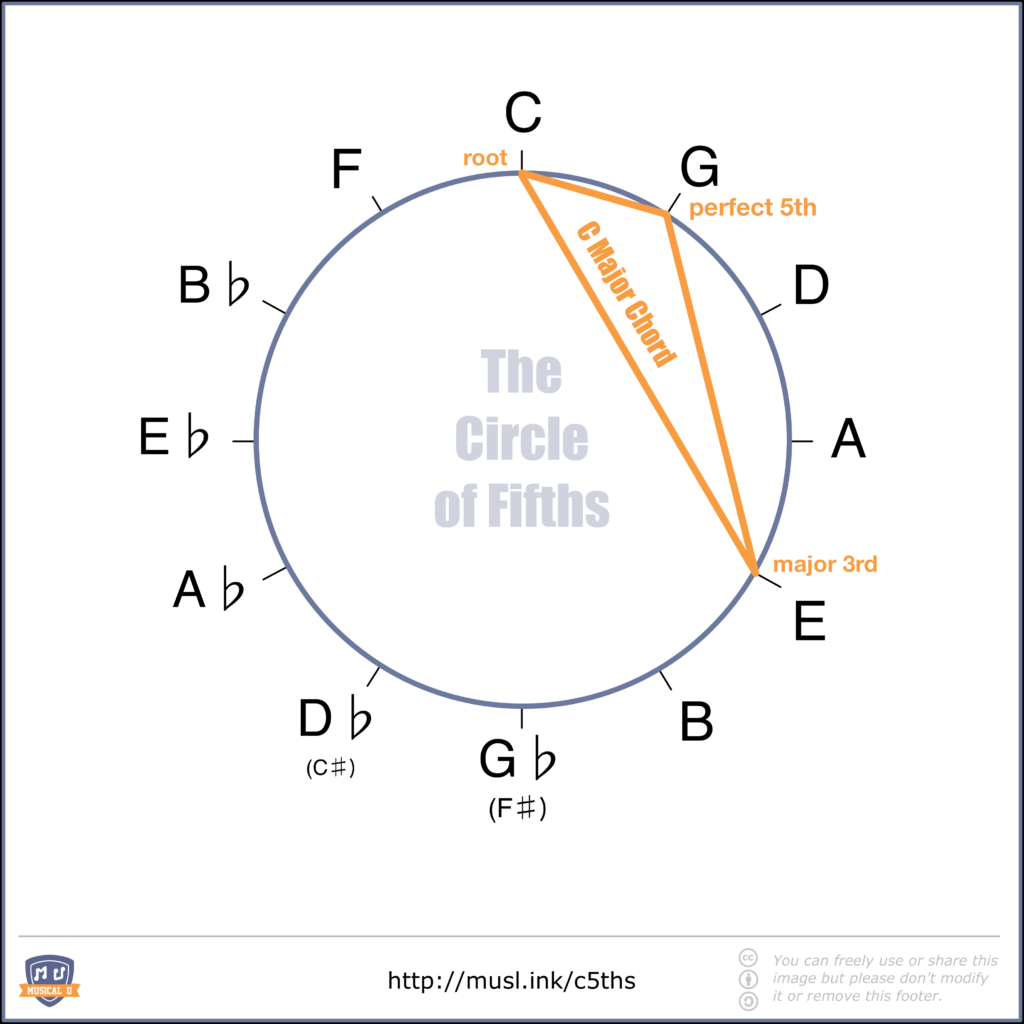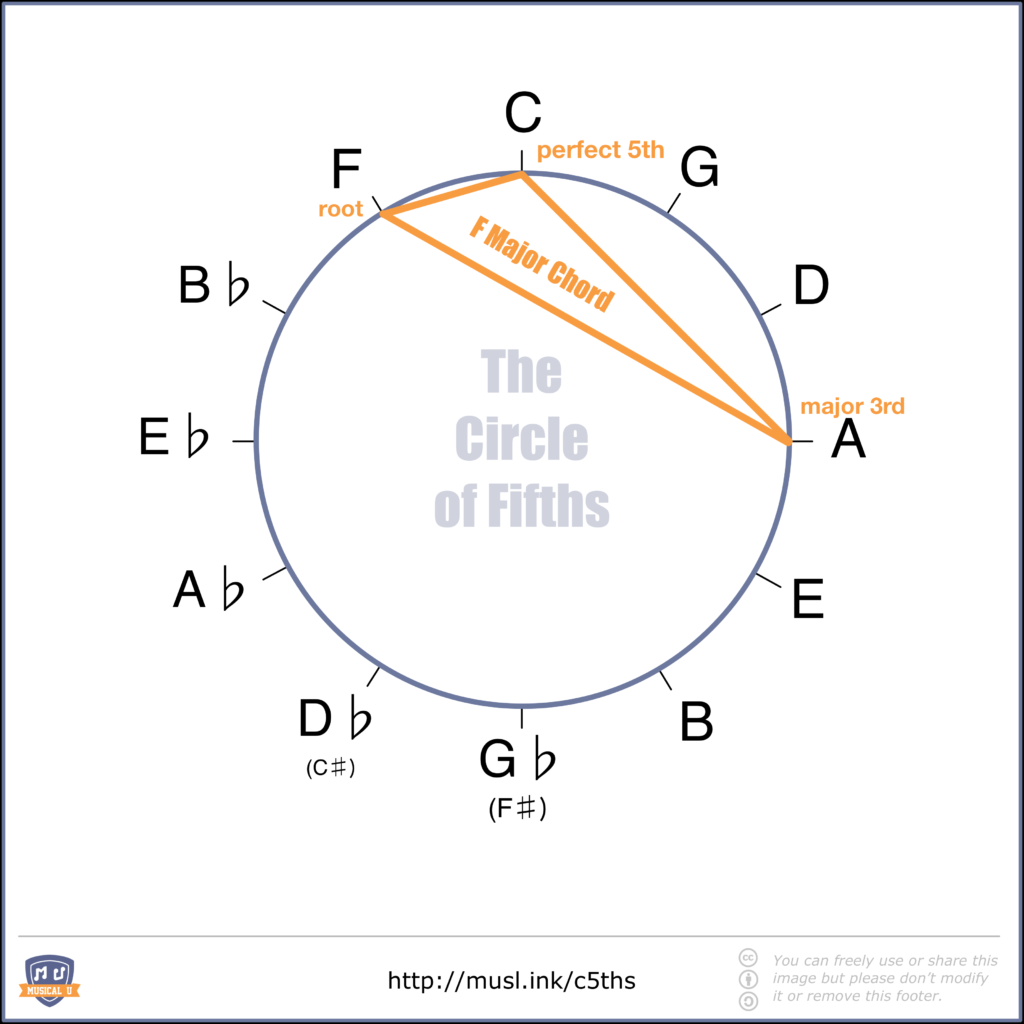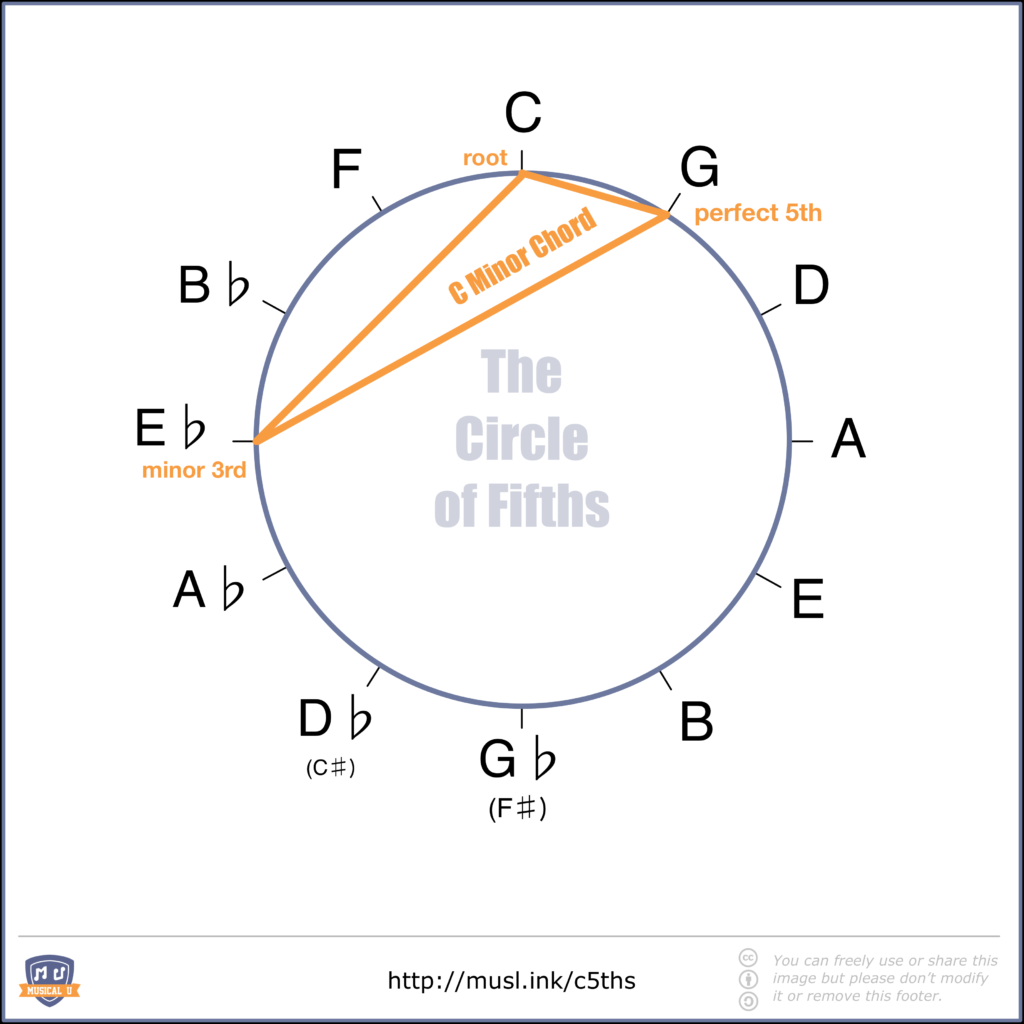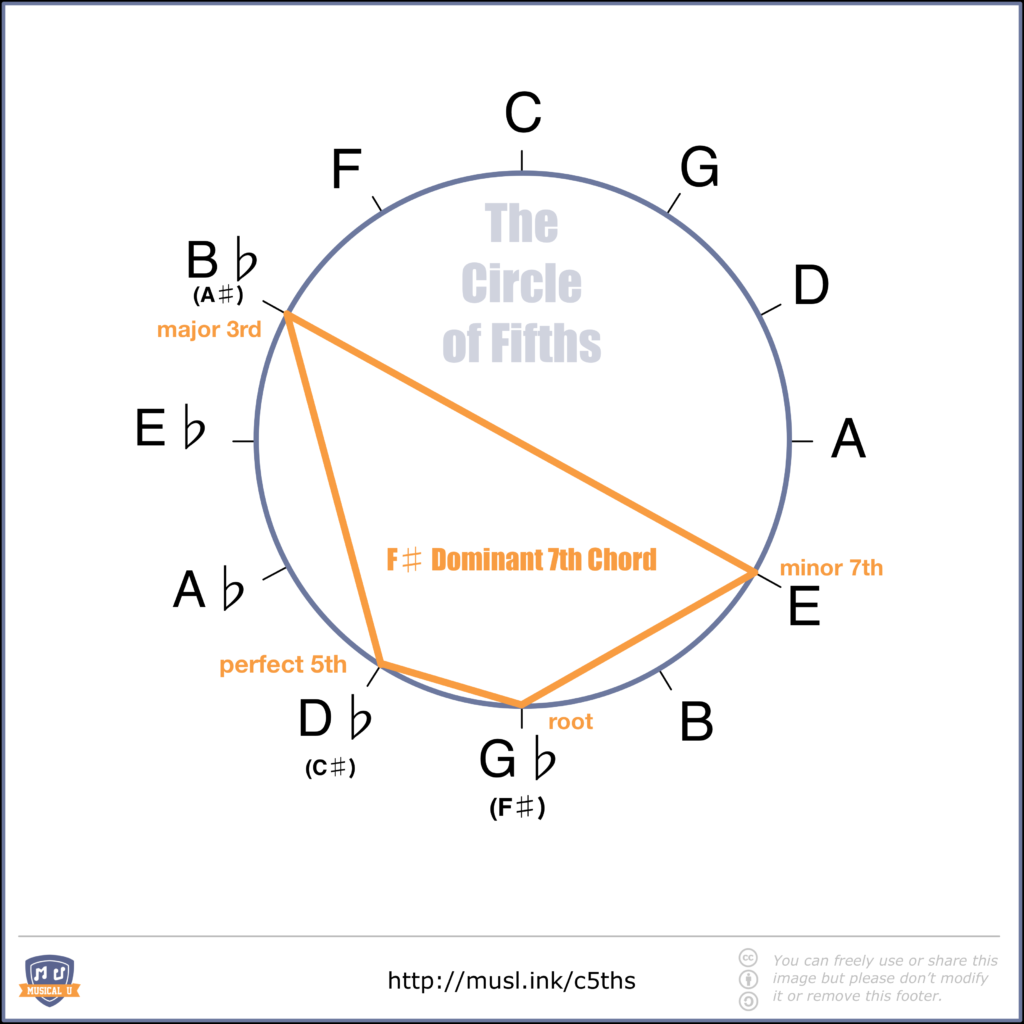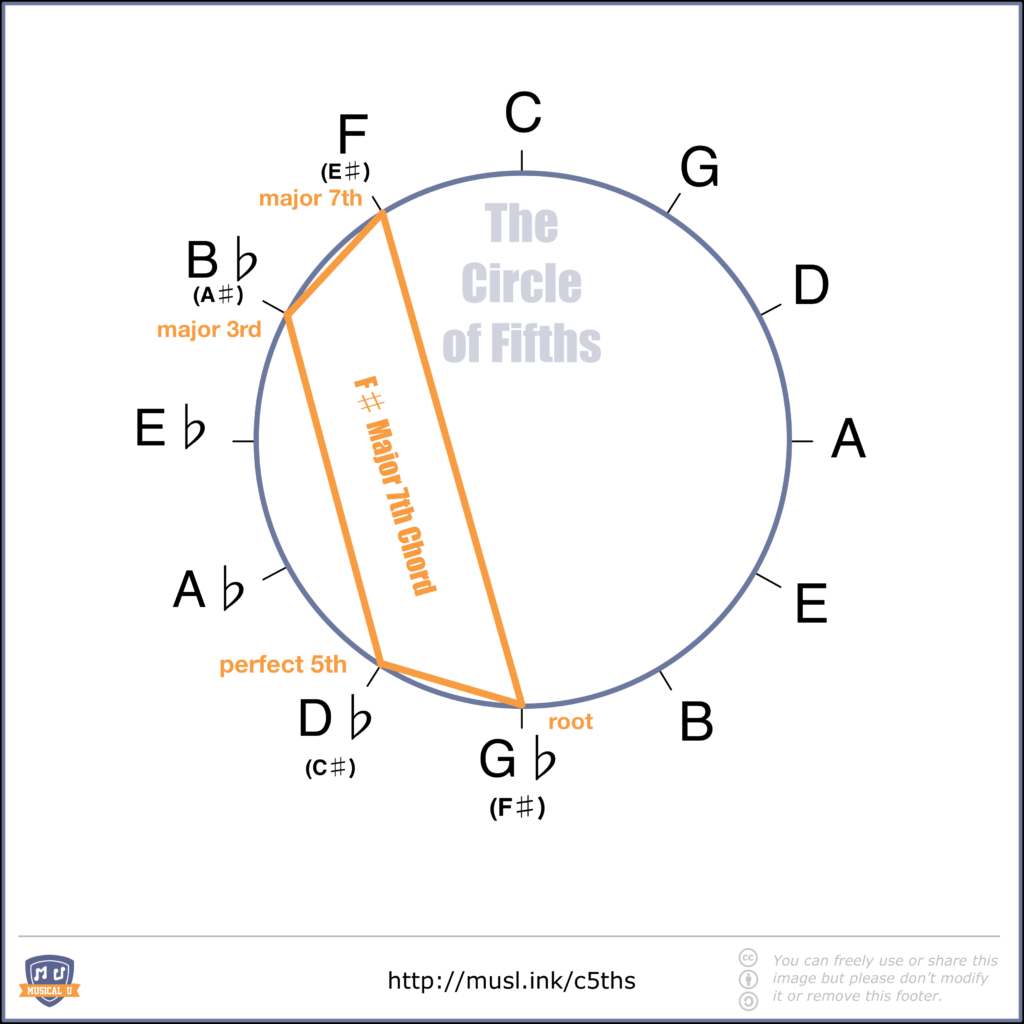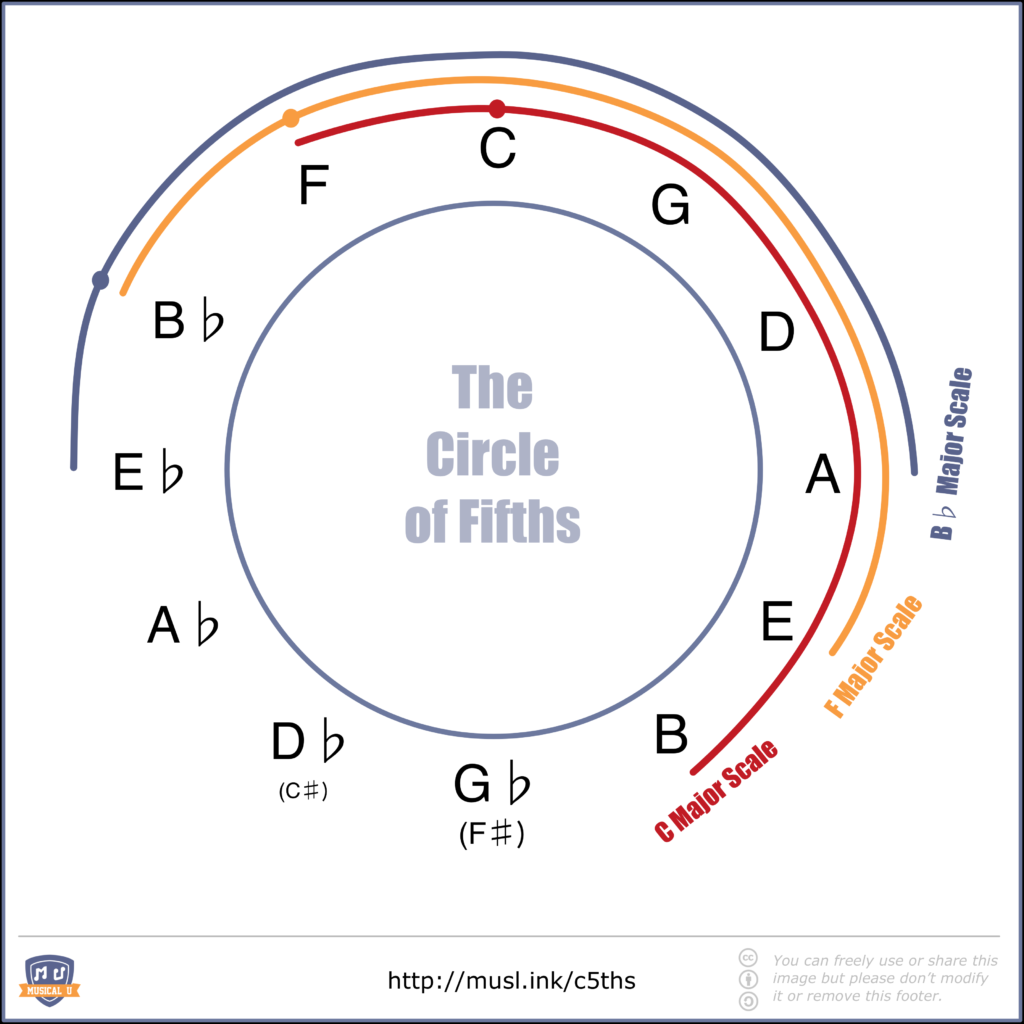The Circle of Fifths is a mystery to many. But what if you found everything you ever needed to know and learn about musical pitch (every note, scale, chord, progressions, etc.) in a simple diagram that could fit in the palm of your hand?
The Circle of Fifths is that magical musical master tool.
This learning device has endured for hundreds of years since its invention, and for good reason; there’s no need to reinvent the wheel. Or, apparently, any other circular entity.
“But is it for me?”, you may ask.
Though the Circle of Fifths is most commonly understood as a component of classical music theory, it’s certainly not only for the hallowed halls of the conservatory. It’s a valuable tool for any musician of any musical background.
Our guide is the Circle of Fifths made easy – very little prior musical knowledge is required, but by the end of this article, you’ll not only understand the mechanics behind the circle, but also how to apply it in music theory, transposition, singing, songwriting, and more.
This incredibly powerful tool will take you far beyond simply understanding music theory – it will help you write music, predict chords in a progression, and understand relationships between major and minor keys. It will serve you well, regardless of whether you are a classical violinist, jazz saxophone player, a bassist in a rock band, or aspiring DJ.
So fasten your seatbelt: we’re diving deep into this infinite pool of musical wisdom. As you will soon see, the magical mojo of this Ring of Power surpasses even Tolkien’s imagination!
Table of Contents
So, here it is, the Circle of Fifths explained, in easy-to-understand bite-sized pieces!
2. Let’s Start With Some Theory…
3. Building Your Own Perfection
4. Introducing the Circle of Fifths
5. Modes and the Circle of Fifths
6. How to Use the Circle of Fifths
7. The Key That Unlocks the World of Western Music
The Circle’s Beginnings
So, how was the Circle of Fifths invented, and who is responsible for the discovery of this musical godsend?
Russian composer and music theorist Nikolay Diletsky set this whole wheel rolling in the late 1670’s. He intended his book Grammatika as a guide to composition, but with the rules of music theory in mind:

Diletsky’s Circle of Fifths
Since then, it has been expanded and improved-upon to yield the comprehensive circular diagram we have today.
Let’s Start With Some Theory…
Before we dive into the mechanics of the circle, let’s first understand some key concepts. Bear with us – this basic music theory will be a huge help in making sense of the circle.
Each “station” on the circle represents a note, a chord, and a key.
The Keys to What?
Let’s begin by answering the question: What’s a key?
In music, we define a key as the “tonal center” of a piece of music. The melody and harmony will revolve around this tonal center, which is simply a single note. This single note is also given the name of the tonic, and is given the scale degree designation “I”.
It is on this tonic that we build the scale or the eight-note sequence that is used to compose melodies and harmonies in the key of the tonic.

The most commonly-encountered types of scales in Western music are called “major” and “minor”. To retain the characteristic major or minor sound, scales in most keys require accidentals – sharps and flats that will give the scale the desired sound.
Each key will have its unique pattern of sharps and flats. However, if you examine the distances (known as “intervals”) between the notes of, say, every major scale and compare them, you will see that the interval pattern is exactly the same in all major scales (this holds true for minor scales as well, though they will have a different pattern from major).

→Learn more about intervals.
Sidebar: What’s a Fifth?
One of these “shared” intervals will be a fifth (also known as a perfect fifth).
So what’s so perfect about a fifth?
Perfect intervals vibrate in pure mathematical ratios. For example, this note (A) is vibrating at 440 Hz (cycles per second):
And this “A” is vibrating twice as fast, at 880 Hz:
We call this interval a “perfect octave”. Octaves relate to each other in some multiple of a 2:1 ratio. Octaves are so “perfect” that, when played together, the notes blend together until it’s difficult to tell one from the other:
The next smallest simple ratio is 3:2:
You can hear that the fifth also blends very well, and has a powerful, resonant sound (which is how the famous guitar “power chords” work.)
So when you put your finger on the 12th fret of a guitar, you’re splitting that string in half (2:1 ratio). To produce the fifth, divide the string into three parts (7th fret).
The perfect fifth interval is said to be consonant, meaning it is a typical “pleasant sound” and sounds stable within music. The fifth of a key can be found by finding the fifth degree of the scale of the key.

If you are familiar with tones and semitones, the fifth can be found by counting seven semitones up. Starting at the tonic, this is seven adjacent keys (this includes black keys!) on piano, or seven frets up on the guitar, bass, and ukulele.
Playing a fretless string instrument? Have no fear! The Circle of Fifths also applies to the violin and its immediate family of instruments.
The fifth shows up frequently in basslines of Western music, with root-fifth patterns being a popular choice for bassists. Why?
The perfect fifth interval sounds consonant and stable, thereby helping the bassist fulfill their role of “supporting” the song; the patterns of this interval sound great under guitar chords. Best of all, it’s a fairly straightforward pattern to memorize and it’s easy to play!
Build Your Own Perfection:
Now that you have a good idea of what a fifth is, it’s time to build your own circle! You can download this and extra Circle of Fifths worksheets to practice and teach everything we cover in this article in our free comprehensive Circle of Fifths Worksheets PDF:
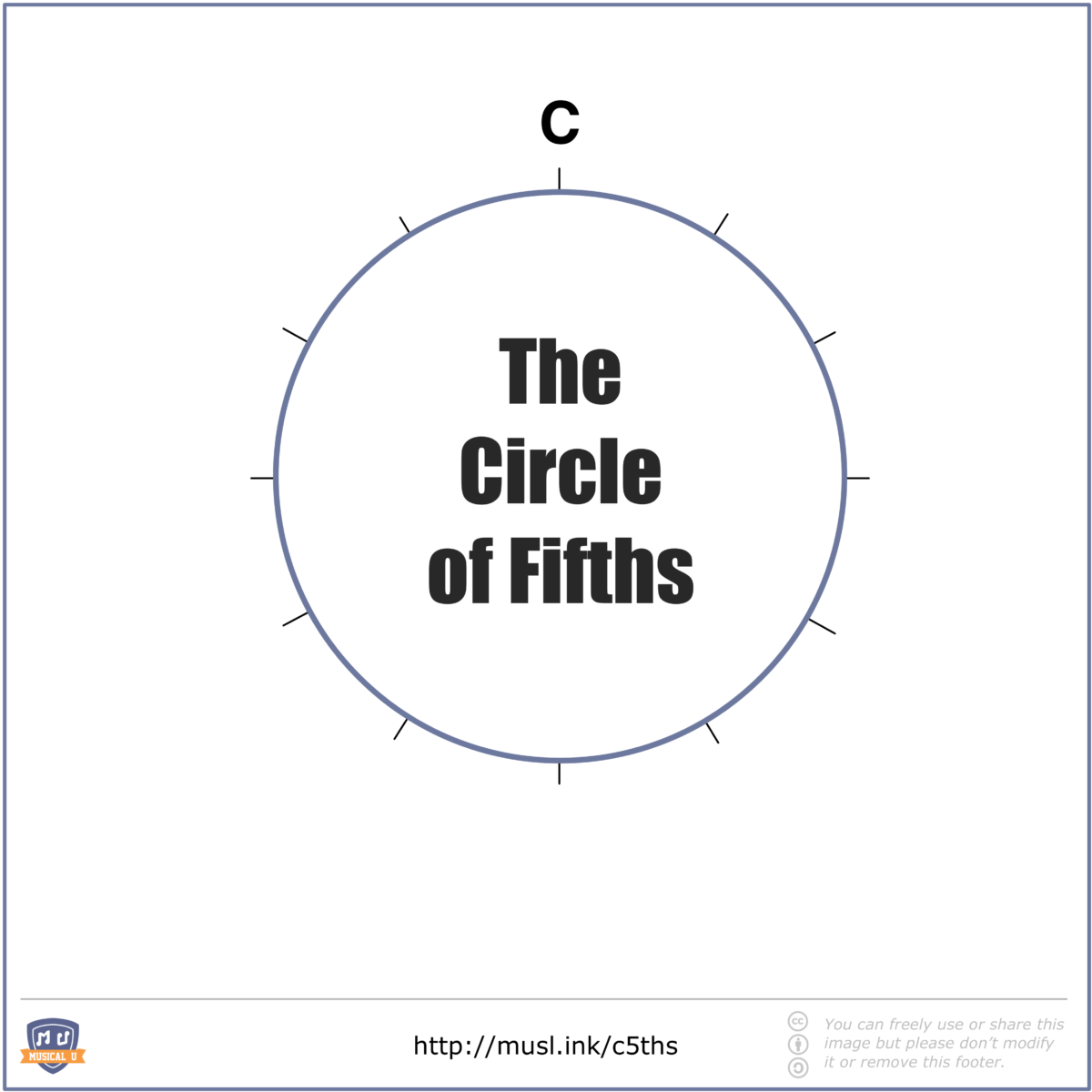
Now count up the C scale five notes:

Write the “G” in at one o’clock. G then becomes the new tonic. Make sure that you are adding in the appropriate sharps or flats for each new tonic center as you continue around the circle. If you’re fuzzy on your key signatures you can look them up, or count your fifths in half-steps (semitones) – remember, a perfect fifth = seven semitones.
If you’re really feeling stuck, follow along with a guide to help you figure out those intervals!
How did it come out? Check your work with the diagram below.
Introducing…The Circle of Fifths!
By definition, the Circle of Fifths is a visual tool designed to illustrate the relationships between the 12 tones of the chromatic scale – the foundation on which Western music is built. The name derives from the fact that going clockwise around the circle, each note is a fifth (a perfect fifth, to be exact) above the previous one in the circle.
The result? This unassuming circle shows how all the musical notes, keys, and chords relate to each other. Let’s explore how the circle is built, starting with the absolute basics…
The Bare Bones
Let’s first look at the most simple iteration of the circle:
Starting with the note of C at 12 o’clock and moving clockwise around the circle, each new note is a perfect fifth above the previous one. The whole Circle of Fifths progression is simply perfect fifths stacked on top of each other, eventually coming back to C from F.
More Than Just Notes
This is one of the many reasons that the Circle of Fifths is important: the letters around the circle aren’t just note names – they also represent the corresponding key of each note. Therefore, we are starting with the accidental-free key of C major at the top of the circle, and working our way around through keys with accidentals in them.
Figuring Out Key Signatures
Here’s the circle with the corresponding key signatures of each major key represented:
Imagine the Circle of Fifths as the keys on the piano twisted into a circle. Middle C is at the very top, where 12 on a clock would be. Why is it at the top? Because C major has no sharps or flats so it is almost like a “neutral” key.
While the diagram may initially appear overwhelming, fear not! The addition of sharps and flats not only follows a predictable pattern when going around the circle, but the direction you’re heading in tells you whether you’re adding sharps or flats. Remember: no key signature has both sharps and flats.
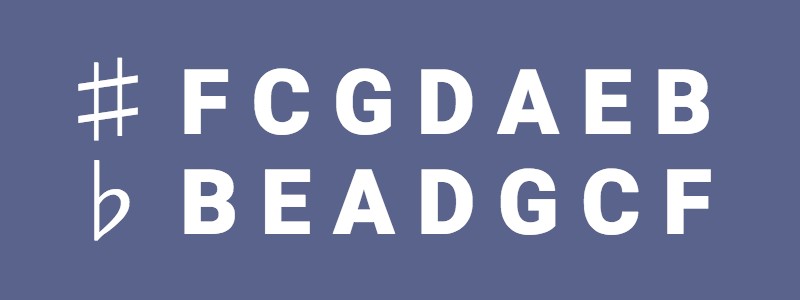 Head clockwise around the circle starting at C major. G major has one sharp (F♯), D major has two (F♯, C♯) and so on. Soon you’ll notice that new sharps are added in the order F-C-G-D-A-E-B. Head counterclockwise around the circle starting at C major, and you’ll see that flats are added in the reverse order: B-E-A-D-G-C-F.
Head clockwise around the circle starting at C major. G major has one sharp (F♯), D major has two (F♯, C♯) and so on. Soon you’ll notice that new sharps are added in the order F-C-G-D-A-E-B. Head counterclockwise around the circle starting at C major, and you’ll see that flats are added in the reverse order: B-E-A-D-G-C-F.
Making your life easier still: the number of steps you take around the circle tells you how many accidentals the key will have. If you’re trying to figure out the number of sharps B major has, count the five steps around the circle to determine that it will have five. The letter sequence will tell you that its sharps are F♯, C♯, G♯, D♯, and A♯.
If you want to memorize one thing about the Circle of Fifths, this sequence of letters should be it! A useful (and heartwarming) mnemonic for this Circle of Fifths pattern is “Father Christmas Gave Dad An Electric Blanket”. Come up with your own creative one in reverse for remembering the order of flats!
Understanding the key signature aspect of the circle may take some practice and figuring out your own methods of memorization. Check out this follow-along instructional video for a comprehensive explanation of key signatures.
Sidebar: Where Things Get A Bit Tricky…
The letter sequence F-C-G-D-A-E-B may end up confusing you if you look at the circle and realize that there’s no E♯ or B♯ anywhere on the key signatures of the circle.
And you’re absolutely right. E♯ would be F major and B♯ would be C major.
But remember, we’re counting sharps from G, so once we get to seven sharps (and every note is therefore sharpened), it actually becomes far easier to think of the scale in terms of flats, because there will be fewer accidentals!
This is where the concept of enharmonic equivalence comes in; C♯ major will be identical to D♭ major, and if you represent the pitches in the C♯ major scale (with every degree being sharpened) in terms of flats and naturals instead of sharps only, you get the five-flat key signature of D♭ major.
In our chart, G♯, D♯, and A♯ are included because they sometimes come up as useful chords (thanks mostly to guitarists, who tend to like sharps more than flats) – but E♯ and B♯ would be rare exotic beasts for any instrument.
What About Minor Keys?
So far, the circle we’ve presented to you has only contained major keys and their key signatures. The good news is, you don’t have to construct a second circle for the minor keys! You can fit them right into the circle by following the rules of relative minors:
A quick refresher: the relative minor of a key has the same key signature, and therefore all the same notes, as the major.
Here are two ways to quickly find the relative minor of a major key:
- Work out the major scale on paper or on your instrument. The relative minor tonic will be on the sixth degree of the scale. In terms of intervals, that’s a major sixth up or a minor third down.
- Using the Circle of Fifths, simply move three positions clockwise around the to find the relative minor! So, starting from C, count one (G), two (D) and then three: A is your relative minor.
If you’re paying really close attention, you’ll notice that the relative minors going clockwise around the circle are also a fifth apart!
The Circle is Complete
Aaaand there you have it! These components make up the full Circle of Fifths. We know that it’s a lot to take in for the newly initiated, so if you’re overwhelmed, don’t panic: try working with an interactive Circle of Fifths to look at a key-by-key breakdown of the diagram!
Also Known As…
The reason for calling it the Circle of Fifths should be fairly obvious by now: adjacent keys of both the major and minor quality are separated by an interval of a perfect fifth.
However, there is another way to think about all this.
You may have heard of something in music called the Circle (or “Cycle”) of Fourths. Good news: Circle of Fourths and the Circle of Fifths are not two separate concepts, but two different names for the exact same thing!
The Circle of Fifths can, alternatively, be named the Circle of Fourths because if you decide to go counterclockwise around the circle, each note is a fourth above the previous one.
Both names are equally “right”, and you’ll find that both are used in reference to the circle.
Modes and Circle of Fifths
Before we jump into the numerous uses of the Circle of Fifths, let’s check out how it relates to musical modes. For the uninitiated or for those wanting a refresher, check out our introduction to modal improvisation.
If you squish any seven adjacent notes in the Circle down to a scale, you wind up with the Lydian mode, rather than the major scale:

Compared with the major scale, the Lydian mode is distinctive in its floaty, perpetually unresolved demeanor. Its notes give it an almost magical quality.
Keep going, and you get a full chromatic scale.
Jazz theorist George Russell built his Lydian Chromatic concept on this quality of the Circle of Fifths – which he called “The Circle of Close to Distant Relationships”. Keep messing with the Circle and you’ll figure out that all the various modes can be derived.
How to Use the Circle of Fifths
Now that you know how the Circle of Fifths works, you must be wondering how you can apply the Circle of Fifths. This section really could be a full novel in itself. There are limitless uses of the circle. Some are self-evident, and simply require taking a close look at the circle, while others venture into territory of complicated harmony and all sorts of mental gymnastics regarding keys and key signatures.
If fact, once you see just how useful it is, you may have the inspiration for your next tattoo! If you’re not really that committed, you can always try a temporary circle of fifths tattoo or guitar vinyl stick on.
Here are a few of the more basic and useful applications of the circle.
Using the Circle of Fifths to find Key Signatures
Let’s work through an example of how to find a key signature. Say you are learning a song that is in F major and you want to know which sharps or flats to use. As you can see from above, the Circle of Fifths has the answer!
While reading through, keep in mind the F-C-G-D-A-E-B sequence we introduced earlier and that it shows the order in which sharps (and when spelled in reverse, flats) are added to keys around the circle.
In order to work out how many sharps or flats are in F major, we need to find it by moving round the Circle of Fifths. Remember we always start at C. If we were to head round clockwise once, we would land on G. This has one sharp in its scale, and if you consult the F-C-G-D-A-E-B sequence, you’ll know it’s F♯. If we head round once more, we would land on D, with the two sharps of F♯ and C♯. So far F is not coming up, which is what we need.
Let’s try moving the other way. Go back to C, then move counterclockwise once. A perfect fifth below C is F. This is what we’re looking for! Because we’ve moved round counterclockwise once to land on F, F has one flat. Recall the F-C-G-D-A-E-B sequence backwards (because we’re now talking about flats, not sharps), and you’ll see that F major’s key signature consists of Bb.
This isn’t just the pattern of notes around the circle of fifths. It is also the order in which sharps are added to each successive key when going around the circle clockwise.
Need to memorize the order of flats? Easy! Just take that seven-letter sequence and spell it backward, getting B-E-A-D-G-C-F. This gives you the order in which flats are added to each successive key when going around the circle counterclockwise!
Using the Circle of Fifths to Build Scales
Now that you know how to easily find the key signature of any key using the circle, figuring out the full scale is easy. You know the tonic you want to start from. Each successive note could be natural (accidental-free), sharpened, or flattened. The key signature will tell you the sharps or flats of the scale, and each other note will simply be natural.
Easy!
Read scales right off the Circle
Here’s a dirty little secret: you don’t even have to know the key signature (though you’ll want to!). To read any major scale, count seven notes clockwise, beginning from the note immediately counterclockwise in the circle (otherwise you’ll find the Lydian mode). Reduce them down to a scale order and there you have it:

Ethan Hein has more on reading scales off the circle.
Using the Circle of Fifths to Build Chords
Chords are simply clusters of notes played together for a sound that is consonant, or pleasant to listen to. They come in multiple flavours: major, minor, augmented, diminished, seventh, etc…
For the purposes of this guide, we’ll zero in on some common chords that our beloved circle can help you build within minutes; this section will be particularly useful to the guitarists in the house.
Major and Minor Chords
A major chord consists of three notes: the tonic, a major third above the tonic, and a perfect fifth above the tonic. The major third interval is found simply by counting up four semitones (or two whole tones) from the tonic. As for the fifth, simply travel clockwise around the circle by one step to find the third note of your triad!
This C major chord is fairly easy to find and play on most instruments. For example, seeing as the “blow” notes of the first three holes on the harmonica are C, E, and G, respectively, you can play a C major chord by blowing into the first three holes on the instrument.
You can rotate this shape around the circle and instantly find any major chord:
A minor chord is the same, save for a minor third above the tonic instead of a major third. Find the fifth in the same way as above, and count up three semitones from the tonic to determine your third.
Try this one yourself – draw a C minor triad in the circle.
Show answer
How did you do?
Dominant Seventh Chords
These chords show up a lot in all kinds of music. The dominant seventh chord simply consists of a major triad with a minor seventh stacked on top.
Dominant sevenths are four note chords, leaving you three notes that you have to figure out above the tonic. You already know how to find two of these – use the same rule as described above, keeping in mind that dominant seventh chords will contain a major third.
As for finding the seventh, the circle can help you out once again. Simply count two steps counterclockwise from the key in which you’re building the chord to give you the seventh.
Give it a try: build a dominant seventh chord in F♯.
Show answer
In fact, it’s possible to build a Circle of Fifths made up of dominant seventh chords! Jazz music commonly has sequences of dominant seventh chords whose tonics are separated by fifths. Jazz saxophonists: try playing your way around the circle by starting with a C dominant seventh chord and progressing up by fifths, building new dominant seventh chords on top of each new tonic.
Now, try building the Major Seventh Chord shape. Here’s a hint: replace the minor seventh interval with a major seventh!
Using the Circle of Fifths to Play Chord Progressions By Ear
Some chord progressions are a lot more popular than others, and certain chords within a key are also more important than others. Chord II is the most important, but chords IV and V are also very popular, since they are so closely related to I.
Our handy Circle of Fifths also show us the relationships between these chords. The closer they are in the circle, the more closely they are related (Remember George Russell’s Circle of Close to Distant Relationships?).
So it’s easy to find out chords IV and V of any key: just pick any letter around the circle and treat that as I. The letter to the left is IV, and the letter to the right is V. So chord IV of C is F, and chord V is G.
Any other roman numeral chord will have its own relationship in the circle, so once you work out that relationship, you can always use it to find that chord for a given key.
For example, another important chord is vi. The reason for this is because I, IV, V and vi are used in a lot of four-chord progressions. One common chord progression is I, vi, IIV, V which can be heard in literally hundreds of famous songs. Another is IV, V, vi, IV – in fact the Axis of Awesome even exploit this in their infamous sketch:
The Circle of Fifths for Songwriters
The circle contains plenty of tricks to make your life easier when writing music. When you get good enough at using the Circle of Fifths to identify chord progressions, you can start predicting what comes next and if you’re writing songs you will know which chords will work well together.
Chords that are close together on the circle are closely related, and tend to flow with each other. If you look closely at key signature patterns in the circle, you can see why this is.
Two keys that are adjacent to each other in the circle have six out of seven notes in their scales in common!
Therefore, using keys and chords contained to one side of the circle will help you craft melodies with consonance, or songs that are euphonic and pleasing to the ear.
In fact, that’s why the I – IV – V chord progression sounds so familiar and satisfying; look on the circle, and you’ll see that these three scale degrees appear clustered together on a side of the circle, with V found immediately to the right of the tonic, and IV immediately to the left.
Finding Your Way Home
Obviously, building a song using fifths will sound pleasant and “natural” – but you can’t do this forever!
Try this: compose a melody that ascends by fifths for a while. Then, jump across the circle to a key that doesn’t have that much note overlap with the melody you just wrote, but that you like the sound of. From this key, find your way back to the tonic any way you’d like; perhaps by continuing clockwise around the circle until you circle back to the starting note! You can “exit” the Circle of Fifths anytime you want, and find your way back in.
Crossing the Circle
However, this doesn’t at all mean you should stick to one side of the circle. Sometimes, you don’t want an easy, pleasant sound. Try experimenting with creating tension and dissonant progressions by leaping across the circle.
Using combinations of more distant chords tends to produce a more pronounced musical shift. There are parts in the song where this can be exploited for impact, such as in the bridge. You can use these principles to create innovative chord progressions that reflect the emotion in your lyrics.
Beyond Major…
Lastly, remember that the Circle of Fifths reveals there’s a world of modes and rich harmonic possibilities beyond the obvious major keys lining the circle!
If you play with the Circle of Fifths enough, you’ll find a place for any number of chords beyond the usual major triads.
Change a chord from major to minor to give a bittersweet quality to the progression. Add a seventh to another chord to highlight a point of change in your song. Exploring the relationships of various minor, seventh, and extended chords within the Circle of Fifths will add much more depth to your songwriting
The Key that Unlocks the World of Western Music
 Whew! That was a lot of Circle Lore to digest! Thinking you’ll need some more time with the Circle of Fifths? Try the Circle of Clock.
Whew! That was a lot of Circle Lore to digest! Thinking you’ll need some more time with the Circle of Fifths? Try the Circle of Clock.
You can also download a free PDF all the Circle of Fifths diagrams from this post.
Once you get the hang of the basics of the circle and understand the way the key signatures and relative minors work, there’s no limit to its uses. On-the-fly transposition and transcription, harmony writing, and sophisticated songwriting are only some of the faculties that await the musician that spends some time familiarizing themselves with the Circle of Fifths.
Start today, and start small: work out how to find the key signatures and relative minors, and see how quickly you can progress to drawing the circle by memory, just by recognizing its patterns. The more often you use it, the more fluent you will become, and soon you’ll start seeing more and more patterns within the circle!
The post The Ultimate Guide to the Circle of Fifths appeared first on Musical U.
